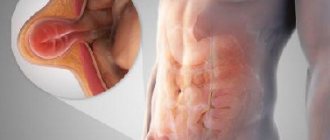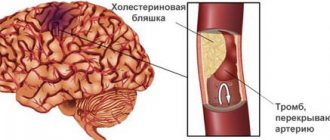Symptoms characteristic of acute respiratory infections: high fever, weakness and dry cough do not always indicate a cold. Rubella begins in a similar way. The infection itself is practically harmless. With rare exceptions, it is quickly cured and forms lifelong specific immunity that protects against repeated infections. But for pregnant women, this disease is often fatal, as it causes irreversible damage to the fetus.
Rubella infection
The causative agent of the infection is a simple RNA virus (Rubivirus). The name of the disease indicates its main symptom - a profuse bright pink or crimson rash all over the body. The pathogen is transmitted by airborne droplets: with particles of saliva, nasal discharge, drops of sputum. The infection enters the body through the respiratory tract. Less commonly, it is possible to receive a dose of infection through microcracks in the skin when touching objects contaminated with it. The virulence of the microbe is much lower than that of chickenpox, measles or influenza, so infection does not always occur even with close contact with carriers. The pathogen loses activity in the sun, under the influence of antiseptics, and household cleaning products. But when it is transmitted, susceptibility to the disease is observed in most people.
The virus multiplies and spreads in the body within 1.5–3 weeks. During the incubation period, the carrier does not feel a deterioration in health. There are also no external signs of infection. 5–7 days before the onset of clinical symptoms, the patient becomes contagious and actively secretes the virus when coughing and blowing his nose.
Features of the rash
Even before the rash appears on the face and torso in children infected with rubella, one can observe bright pink specks in the mouth, which gradually merge into dark red spots.
Skin rashes begin to appear on the face, namely its lower part: in the ears, nasolabial area and on the cheeks. A day later, the rash begins to spread over the child’s body. The most pronounced spots of the rash appear on the buttocks, shoulders, elbows and knees. The approximate location of the rash on the body is shown in the photo below (under the letter “b”).
At the same time, the rashes are never localized in children in the groin, on the feet and palms, which distinguishes rubella from other diseases.
Symptoms and stages of rubella
The first signs of rubella:
- low-grade or high body temperature;
- sore, dry and burning throat;
- dizziness, headaches;
- aches in muscles and joints.
As intoxication increases, regional lymph nodes enlarge, especially the occipital and cervical ones. They become noticeably dense and painful.
After 2–3 days of the prodromal period, a rash appears. In some cases, enanthema appears already in the first days of the disease. It is typical that it first affects the skin of the face, neck, and scalp, spreading further along the chest, back, arms and legs. Only the inner surfaces of the feet and palms remain clean. The rash may be preceded by itchy skin.
The rash with rubella is abundant: in the form of bright, multiple small, even, round spots. Its elements do not rise above the skin and do not change its pattern and structure. Papules and vesicles are not formed. In children, rubella spots are clearly demarcated from each other. In adults, they often merge into huge continuous formations.
Other symptoms of rubella:
- cough with a small amount of sputum;
- runny nose;
- inflammation, swelling and pain in the joints - usually observed only in women;
- redness of the mucous membranes of the eyes, mouth and throat;
- moderate increase in the size of the liver and spleen;
- dyspepsia: nausea, lack of appetite;
- general malaise due to intoxication.
In children and adults, the infection progresses almost identically, with the exception of the nature of the rash. In addition, in childhood, rubella more often leads to enlarged lymph nodes. In adulthood, this symptom does not always occur or occurs more smoothly.
The acute stage, accompanied by a rash, lasts no more than 5 days. From the first days of infection, an immune response is formed. At the height of the disease, antibodies clear the blood of virus residues, which leads to the rapid disappearance of most symptoms:
- general physical condition is normalized;
- the rash turns pale and resolves;
- Headaches and joint pains disappear.
Lymphadenitis persists a little longer - up to two weeks, then the nodes return to normal.
Complicated rubella is rare. Sore throats, cakes, and the addition of secondary bacterial infections are likely. In isolated cases, encephalopathy and neurological disorders develop.
Complications
Usually the disease in children is mild. Consequences from a previous illness are possible if the child’s immunity was weakened, or at the time of the illness another one was added to it. The disease is more difficult for unvaccinated children to tolerate.
Possible complications:
- angina;
- pneumonia;
- meningoencephalitis;
- otitis;
- arthritis;
- thrombocytopenic purpura (a decrease in the number of platelets in the blood is characterized by frequent bleeding, local hemorrhages on the skin);
- rubella encephalitis (inflammation of the membranes of the brain). The child recovers and is registered with a neurologist and infectious disease specialist for another 2 years (or maybe more). There is a possibility of death.
Congenital pathology has the following consequences:
- deafness;
- diabetes;
- encephalitis;
- bone damage;
- thrombocytopenic purpura;
- pneumonia;
- developmental delays;
- hepatolienal syndrome (enlarged liver and spleen);
- malformations of the eyes, heart defects.
The danger of rubella for pregnant women
The Rubivirus virus penetrates the fetal tissue and provokes severe intrauterine disorders, diseases and deformities. For this reason, a test for rubella is included in a mandatory set of studies when planning the birth of children. The presence of specific antibodies in the blood serum indicates the safety of the pathogen for the woman. Their absence requires vaccination.
After accidental contacts of pregnant women with sick or probable carriers of rubella, they are administered immunoglobulins for emergency prophylaxis. When infected with the virus for up to 6 weeks, severe consequences develop in half of the cases. Intrauterine fetal death, microcephaly, complete deafness and other irreversible consequences are possible. In the later stages - after the 13th week of gestation, infection is less dangerous; the risk of complications in the child is about 5%.
Prevention
A sick child is isolated for 5 days from the day of the rash. Children who have been in contact with the sick person are not removed from the child care facility, and quarantine is not imposed on a group or class in child care institutions. No disinfection is carried out. It is very important to prevent pregnant women from contact with rubella patients to prevent congenital rubella.
If during pregnancy a woman who has not had rubella had contact with a patient in the first trimester of pregnancy, the issue of terminating the pregnancy should be decided. A serological examination of the woman is carried out on days 11-12 after contact and another 8-10 days later. If a woman is infected, the pregnancy is terminated according to absolute indications.
Diagnosis and treatment of rubella
An accurate diagnosis of rubella can only be made based on the results of a serological blood test for antibodies. Several tests at intervals of 10 days make it possible to judge the time of infection, the intensity of the disease, as well as determine the acute period, prognosis and determine recovery.
A general laboratory blood test, X-ray of the lungs, EEG of the brain and other types of examinations for rubella are prescribed for secondary bacterial infections, complicated by rubella.
The prognosis of the disease is favorable in most cases. There is no need to buy specific medications for this infection; the body copes with it on its own. In case of severe deterioration in health and fever, you can use antipyretic and painkillers: Aspirin, Ibuklin, Paracetamol and others.
The main method of preventing the disease in the population is vaccination from the second year of life with repeated vaccinations after 6 years, in adolescence and adulthood.
Folk remedies
Popular methods of traditional treatment are:
- Lubrication of the rash. Rashes on the body cause itching in the baby. This reaction can be eliminated by lubricating problem areas with a (strong) soda solution. It is recommended to hold it on the surface of the skin for about 10 minutes. A weak solution of manganese will have a beneficial effect. The moistened napkin should be applied to the itchy area for about 10 minutes.
- Stimulation of immunity. Vitamin teas made from black currant, rose hips, and lingonberries can increase vitality and protective functions.
- Enrichment of children's body with vitamins. An infusion of rose hips, strawberries, and black currants is beneficial for the baby. Parsley, green onions, and dill should be included in the diet.
- Elimination of swelling of the lymph nodes. A cooling compress can help treat this condition. Use homemade cottage cheese. It has excellent anti-inflammatory properties. Place a 1 cm layer of cottage cheese on gauze. Secure this compress on the baby’s neck. Leave it on all night.
- Fighting fever. You can use an old remedy. If the temperature is high, place a damp, cool cloth on the baby's shins.
Medicines
Photo: playbuzz.com
As is known, there is no etiotropic treatment; medications are prescribed to eliminate or alleviate the symptoms of the disease.
For a runny nose, vasoconstrictor nasal drops are used. Currently, the pharmacological market provides a lot of different drugs of this group, created for use among both adults and children. When vasoconstrictor drops enter the nasal mucosa, a spasm of the blood vessels located in it occurs. This leads to a reduction in swelling of the mucous membrane, which helps eliminate nasal congestion, reduce nasal secretion and improve nasal breathing.
Antitussives are prescribed to suppress the cough reflex. If there is a cough with viscous sputum that is difficult to separate, expectorants are indicated. According to the mechanism of action, there are 2 groups of expectorant drugs: one stimulates expectoration, the other dilutes sputum. In most cases, mucolytic agents are used, that is, those that thin out sputum, thereby facilitating expectoration. It is important to note that the simultaneous use of antitussives and expectorants is strictly prohibited!
To eliminate elevated body temperature, antipyretics are used. There are various forms of antipyretics: tablets, syrups, suppositories. This variety was created for ease of use among patients of different age groups. However, with rubella there is often a slight increase in body temperature, which does not require the use of antipyretic drugs. You should resort to their help when the temperature exceeds 38.0 °C.
Vaccination
This is the most effective way to control the incidence rate. Experts advise vaccinating - for the first time or again - everyone who has been in contact with patients.
This measure is designed for the following categories:
- those who have not previously had rubella and have not been vaccinated against it;
- those who were vaccinated once;
- individuals for whom there is no information about the vaccinations they received and the diseases they suffered.
Use of antirubella immunoglobulin
These are ready-made antibodies to the virus, however, their use often provokes side and allergic reactions, and they do not always provide the desired effect. That is why this method is used in exceptional situations, for example, in pregnant women.
Vaccination
A live attenuated vaccine has been used for more than 40 years. The immunity formed as a result of vaccination is identical to the immunity formed naturally.
At 1 year of age, children are vaccinated against rubella and a number of other infections. Then at 6 years of age revaccination is carried out. If there are no contraindications, vaccination is necessary! Despite the relatively favorable course of the disease, there may be complications. And for girls in the future, rubella infection during pregnancy is dangerous.
Side effects are very rare and manifest themselves in the form of redness at the injection site, a slight rise in temperature or a small number of skin rashes. During mass immunization with the introduction of 250 million vaccines, no complications were identified.











